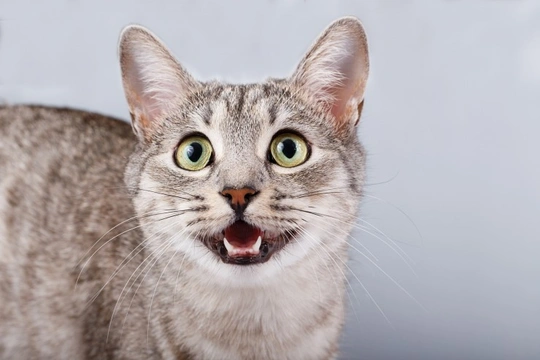
Kittens and retained baby teeth
It sometimes comes a surprise to even lifelong cat lovers to learn that just like humans, cats and kittens get two sets of teeth in their lifetimes, the first being their baby or deciduous teeth and the second being their adult set, which is the set that they will go through the whole rest of their life with.
The reason that not all cat owners and feline enthusiasts are even aware that cats get two sets of teeth at all is because people rarely see their cat’s baby teeth, as these are generally lost as part of eating, and often, ingested and digested along with food in the normal way!
As is the case with children, other than potentially a little teething pain or a feeling of pressure when the new set of teeth come in, teething and the loss of baby teeth and growth of adult teeth in the cat generally takes care of itself, and does not need any intervention.
However, in some cases, there can potentially be a problem with this process, which causes a baby tooth to be retained in the mouth when the adult teeth grow in, which is an issue that can lead to unusual dentition, pain, an overcrowded mouth, and potentially, difficulty eating normally.
In this article, we will look into retained baby teeth in kittens in more detail, including how to identify a problem and what happens next. Read on to learn more.
More about retained baby teeth in kittens
Baby teeth are also known as deciduous teeth, and these teeth are smaller than the cat’s adult teeth will be, in order to fit into the kitten’s smaller mouth! Added to this, a cat’s first set of teeth consists of 26 teeth, whilst their adult teeth will ultimately number 30.
A kitten’s first set of teeth are not in their mouths for very long-they will begin to lose them by around the age of three months old, and by seven or so months of age, they should have all been lost, and the adult teeth should have theoretically replaced them!
This all generally happens organically and without any issue, but in some cases, one or more of the baby teeth will remain in the mouth and not be lost or pushed out by one of the incoming adult teeth, which may become apparent while the cat is still young, or may not be identified until they are much older!
If one or more of the baby teeth stay in the mouth when the adult teeth are trying to come through, this can lead to a range of different issues. The adult teeth will not be able to break through the gum into the position that they should fall into, and will instead be pushed into an odd position, or unable to push through the gum at all.
Too many teeth in the mouth, or crooked or otherwise abnormally growing teeth can lead to an incorrect bite, which means in this case, how the top and bottom jaws close together, and how the teeth meet.
A normal, healthy bite should be even, snug and level, without any teeth obstructing or overshooting the others (aside from the canines) or causing gaps to be present in the closed mouth.
If the bite is abnormal or problematic, this can lead to pain or discomfort as the teeth push into other areas of the gum, and also, problems with being able to eat normally due to either pain, obstruction or because the odd formation of the mouth makes it hard or even impossible for the cat to chew and swallow their food properly.
Over time, this can not only cause immediate problems in terms of pain and discomfort and even malnutrition from eating difficulties, but also potentially change the position of the jaw and push the jaw out of alignment, as it moves to compensate for the issue.
Indications of retained baby teeth in kittens
It is a good idea to schedule a six month health check for your kitten as well as their initial vaccinations and spay or neuter surgery, as these procedures are generally performed prior to the age by which retained baby teeth usually become apparent.
A six month health check with a vet or a veterinary nurse will allow your vet to check over your cat’s teeth and see if there are any retained baby teeth causing a problem, before it gets particularly pronounced.
However, you may notice some of the potential symptoms of retained teeth at home before you even get that far, and some of the main symptoms of potentially retained baby teeth in kittens can include:
- Obviously abnormally grown teeth, which protrude or otherwise are misaligned in the mouth.
- Bad breath.
- Red or inflamed gums around specific teeth, but not across the entire inside of the mouth.
- Blood or pink saliva due to bleeding inside of the mouth.
- Gaps or crooked teeth.
- An inability to close the mouth properly, or an unusual looking bite.
What happens next?
If your cat is found to have retained teeth that are causing a problem, your vet will want to look to correct this as soon as possible. They will need to take x-rays to check out what is happening below the gum line, and then they will need to perform a surgery to remove the tooth or teeth that are causing a problem, and allow the teeth that should be there to come down into their correct position! With a small, young cat, this can generally be performed at most general clinics by a general practice vet, but if the case is particularly complex or challenging, your cat may need to be referred to a veterinary dental specialist.



